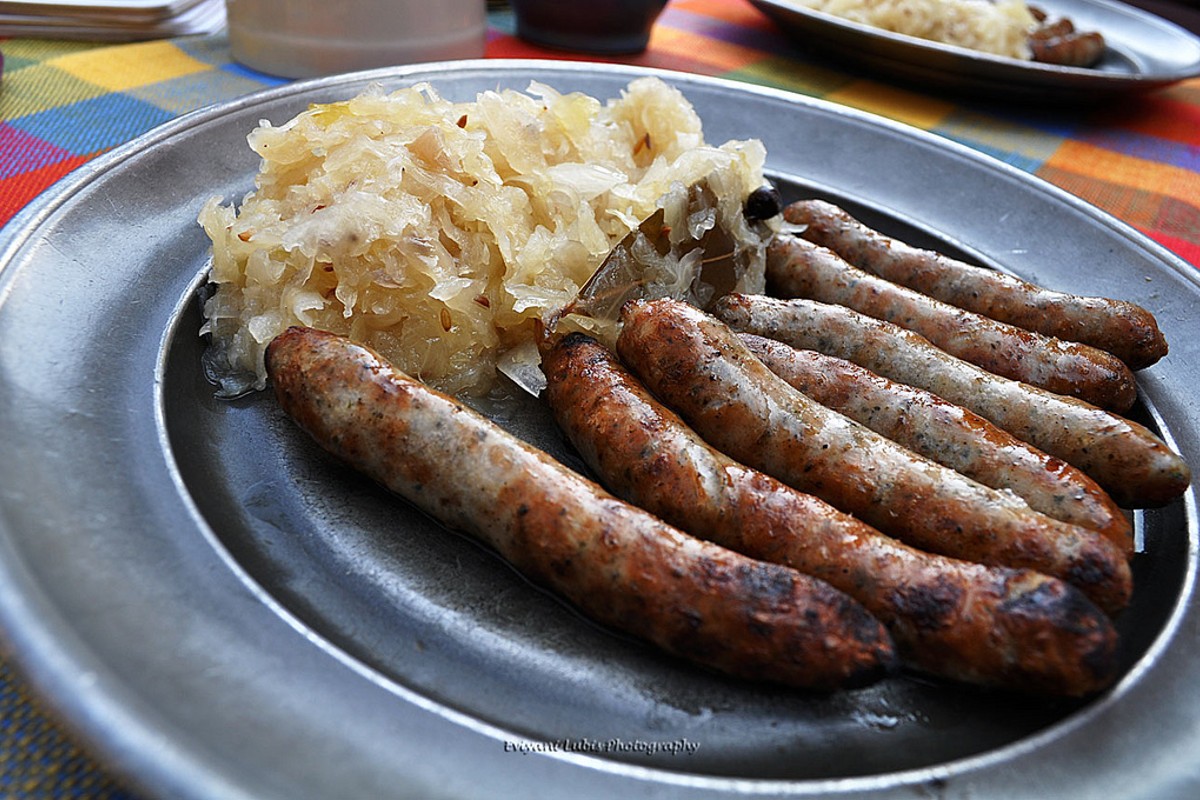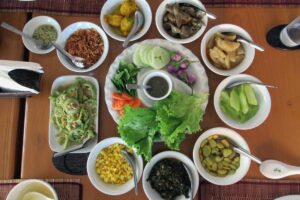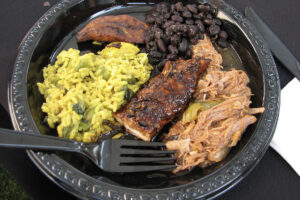Delving into the Hearty Flavors of German Cuisine
Guten Tag (Good day), food enthusiasts! Embark on a culinary journey through the heart of Germany, a country renowned for its rich history, vibrant culture, and, of course, its delectable traditional food. German cuisine, a delightful fusion of regional specialties and hearty flavors, offers a symphony of tastes that will leave you craving more. In this comprehensive guide, we’ll unveil the secrets of traditional German food, showcasing its iconic dishes and the stories they tell.
From the bustling beer gardens of Bavaria to the charming Christmas markets of Nuremberg, German cuisine is a reflection of its diverse regions and warm hospitality. The popular dishes of Germany are a testament to the country’s love for quality ingredients, time-honored recipes, and a passion for creating unforgettable dining experiences.
In this series, we’ll delve into the top 10 must-try dishes of Germany, each representing a unique aspect of the country’s culinary identity. We’ll uncover their key ingredients, explore their cultural significance, and even guide you to some of the most renowned restaurants where you can savor these authentic flavors. So, get ready to embark on a gastronomic adventure through the heart of Germany’s culinary traditions!
1. Sauerbraten (Roast Marinated Meat): A German Classic
Key Ingredients:
Beef roast (or venison, horse), vinegar, red wine, onions, carrots, juniper berries, cloves, bay leaves, ginger snaps (optional), gingersnaps (for the sauce).
Restaurant Recommendation:
Zur Haxe in Berlin is a popular restaurant known for its traditional German cuisine, including a delicious Sauerbraten that’s marinated for days and cooked to perfection. With its cozy atmosphere and extensive menu, it’s a favorite among locals and tourists alike.
2. Rouladen (Beef Rolls): A Hearty and Flavorful Dish
Key Ingredients:
Beef slices (round or flank steak), bacon, onions, pickles, mustard, beef broth, flour, oil, salt, pepper.
Restaurant Recommendation:
Augustiner Keller in Munich is a traditional Bavarian restaurant renowned for its hearty Rouladen. Their version is made with high-quality beef and a generous amount of filling, resulting in a dish that is both delicious and filling.
3. Schweinshaxe (Pork Knuckle): A Bavarian Feast
Key Ingredients:
Pork knuckle, dark beer, onions, garlic, caraway seeds, juniper berries, bay leaves, salt, pepper.
Restaurant Recommendation:
Hofbräuhaus in Munich is a world-famous beer hall and restaurant that serves up an authentic Schweinshaxe that’s sure to satisfy any craving. Their version is roasted to perfection, with crispy skin and succulent meat that falls off the bone.
4. Königsberger Klopse (Meatballs in Caper Sauce): A Culinary Journey to East Prussia
Key Ingredients:
Ground veal, beef, and pork, onions, bread, milk, eggs, capers, lemon juice, butter, flour, beef broth, salt, pepper, parsley.
Restaurant Recommendation:
Max und Moritz in Berlin is a traditional German restaurant that’s known for its authentic Königsberger Klopse. Their version is made with a secret family recipe and is a must-try for anyone looking to experience this iconic dish.
5. Maultaschen (Filled Pasta Squares): A Swabian Specialty
Key Ingredients:
Pasta dough (flour, eggs, water), ground meat (beef, pork, or veal), spinach, bread crumbs, onions, parsley, nutmeg, salt, pepper.
Restaurant Recommendation:
Gasthaus Bären in Stuttgart is a traditional Swabian restaurant that serves up a variety of Maultaschen dishes, including the classic Maultaschen in broth (Maultaschen in der Brühe) and the pan-fried Maultaschen (Gebratene Maultaschen).
6. Bratwurst (Grilled Sausage Platter): A German Street Food Icon
Key Ingredients:
Pork, beef, or veal, spices (such as nutmeg, coriander, caraway), herbs (such as marjoram, parsley), bread or bun, mustard, ketchup.
Restaurant Recommendation:
Konnopke’s Imbiss in Berlin is an iconic street food stand that has been serving up delicious Bratwurst since 1930. Their currywurst, a popular variation of Bratwurst topped with a spicy curry-flavored ketchup, is a must-try.
7. Kassler (Cured and Smoked Pork Loin): A Smoky Delicacy
Key Ingredients:
Pork loin, salt, curing spices (such as juniper berries, coriander, bay leaves), smoke (usually beechwood).
Restaurant Recommendation: Hofbräuhaus in Munich, while famous for its beer and Schweinshaxe, also serves a delicious Kassler. Their version is made with high-quality pork and smoked to perfection, resulting in a flavorful and satisfying dish.
8. Schnitzel (Breaded Cutlet): A Crispy and Tender Delight
Key Ingredients:
Pork (or chicken, veal) cutlet, flour, eggs, breadcrumbs, oil or butter, lemon, parsley.
Restaurant Recommendation:
Gasthaus Krombach in Cologne is a traditional German restaurant known for its delicious Schnitzel variations. Their menu offers a wide range of options, from classic Wiener Schnitzel to more creative takes on this beloved dish.
9. Eintopf (One-Pot Stew): A Hearty and Versatile Meal
Key Ingredients:
Potatoes, beans or lentils, carrots, onions, meat or sausage (such as smoked pork, bacon, or frankfurters), vegetable broth, herbs, spices.
Restaurant Recommendation:
Dicke Wirtin in Munich is a traditional Bavarian restaurant that serves a hearty and flavorful Eintopf. Their version is made with a variety of vegetables and smoked pork, creating a rich and satisfying dish that’s perfect for a cold winter day.
10. Brathering (Fried Herring): A Coastal Delicacy
Key Ingredients:
Herring fillets, flour, eggs, breadcrumbs, oil or butter, mustard sauce, potatoes, onions.
Restaurant Recommendation:
Fischmarkt in Hamburg is a bustling fish market that offers a wide variety of fresh seafood dishes, including Brathering. Their version is made with locally caught herring and is a must-try for seafood lovers visiting Hamburg.
Farewell to German Culinary Delights
As we conclude our culinary journey through Germany, I hope you’ve enjoyed discovering the diverse and delicious dishes that make up this country’s rich food culture. From hearty stews and savory sausages to crispy schnitzels and delicate meatballs, traditional German cuisine offers a unique and unforgettable experience for every food lover.
Whether you’re planning a trip to Germany or simply want to recreate these authentic flavors at home, I encourage you to explore the world of German cuisine. From bustling beer gardens to charming taverns and upscale restaurants, there’s always something new to discover and savor in Germany. So, raise a glass of German beer and toast to the culinary treasures of this fascinating country! Prost!




